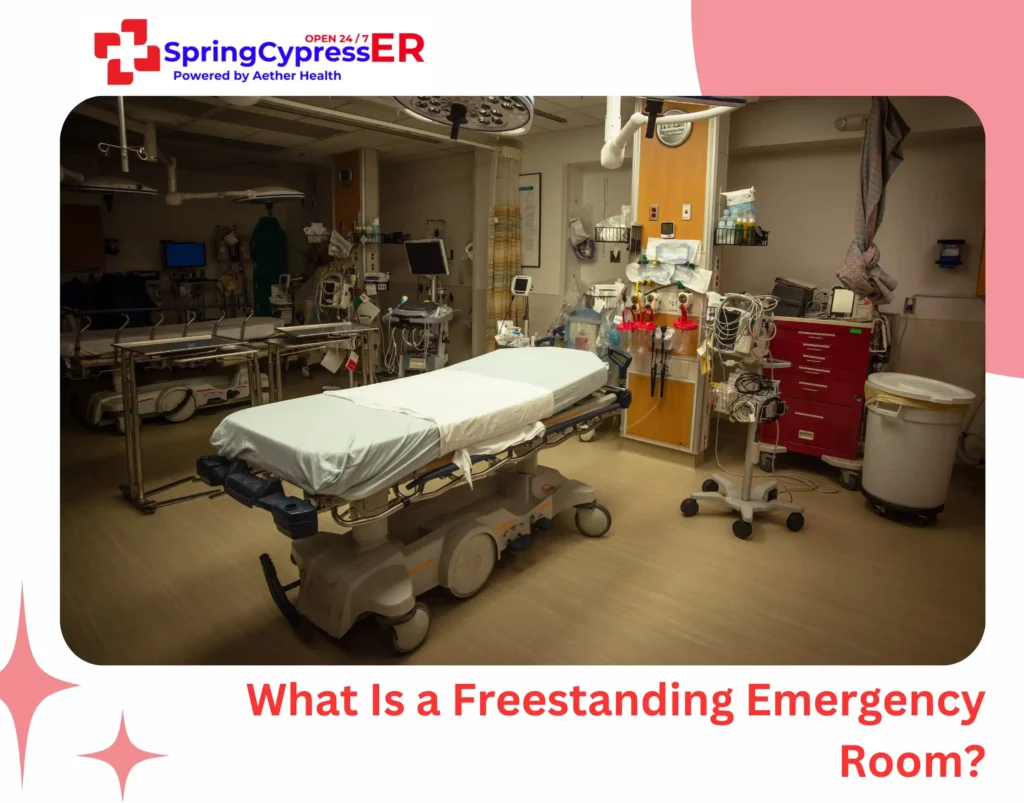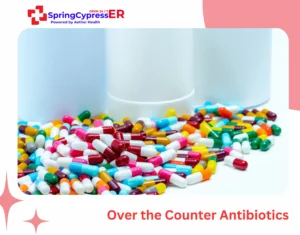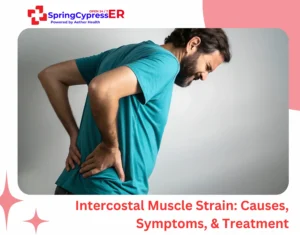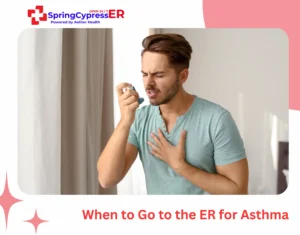When your child has a medical emergency, choosing the right care facility feels overwhelming. Hospital ERs often mean long waits and chaotic environments, while urgent care may lack the equipment for serious conditions.
Finding the right emergency room for kids becomes crucial when serious symptoms develop. Freestanding emergency rooms offer hospital-level care in smaller, more comfortable settings designed to reduce stress for both children and families.
Let’s explore what freestanding ERs can and cannot do for pediatric emergencies so you make confident decisions when your child needs immediate medical attention.
What Is a Freestanding Emergency Room?

A freestanding emergency room is a fully equipped emergency care center that operates independently from hospitals while maintaining the same medical standards and safety protocols. For parents seeking an emergency room for kids, these facilities offer hospital-level care with important advantages.
Safety-wise, freestanding emergency rooms such as the Spring Cypress ER meet the same licensing requirements, accreditation standards, and medical protocols as hospital emergency departments. We’re staffed by board-certified emergency physicians and equipped with identical life-saving equipment and medications.
The key difference lies in environment and accessibility. Freestanding ERs provide quieter, less chaotic settings that reduce stress for children while maintaining full emergency capabilities. They’re often located in suburban neighborhoods to reduce travel time during critical situations.
For pediatric emergencies, this combination of hospital-grade safety with family-friendly environments makes freestanding ERs a trusted option for many parents.
Are Freestanding ERs Safe for Children?
Yes, freestanding emergency rooms are safe for children when they meet proper accreditation standards and employ pediatric-trained staff. The safety of any emergency room for kids depends on medical qualifications, equipment standards, and emergency protocols rather than facility type.
Our Spring Cypress emergency room for kids maintains identical safety requirements as hospital emergency departments. We have:
- Board-certified emergency physicians with pediatric emergency training and experience
- Advanced life support equipment including pediatric-sized airways, IV equipment, and resuscitation tools
- On-site diagnostic capabilities like digital X-rays, CT scans, and comprehensive lab testing
- Emergency medications in pediatric dosages for critical situations
- Accreditation standards ensure quality and safety protocols
The safety advantage for children often comes from the environment itself. Smaller, calmer settings reduce anxiety that can complicate treatment, while shorter wait times mean faster intervention for time-sensitive conditions.
Additionally, established transfer protocols with local hospitals ensure seamless coordination when specialized pediatric care becomes necessary. This safety net provides parents confidence that their child will receive appropriate care regardless of complexity.
What Conditions Can Freestanding ERs Treat in Children?
The Spring Cypress emergency room for kids can handle most urgent pediatric conditions that require emergency-level care. Our emergency physicians can diagnose and treat:
Respiratory and Fever-Related Emergencies
- High fever requiring immediate evaluation and treatment
- Cough, flu, RSV, or other respiratory illnesses causing breathing difficulty
- Asthma attacks requiring nebulizer treatments or medications
Infections and Illness
- Ear infections causing severe pain or complications
- Urinary tract infections with concerning symptoms
- Dehydration or persistent vomiting requiring IV fluids
Allergic Reactions and Skin Conditions
- Severe allergic reactions
- Unexplained rashes or swelling
- Skin conditions
Injuries and Trauma
- Sports injuries including sprains and strains
- Simple fractures that can be treated with casting or splinting
- Cuts requiring stitches or advanced wound care
These conditions represent the majority of pediatric emergencies that parents encounter. If your child’s symptoms match these categories and seem urgent, visit the nearest emergency room immediately.
Advantages of Taking Your Child to a Freestanding ER
Here are some benefits that make facilities like Spring Cypress ER a trusted option for pediatric emergencies:
1. 24/7 Availability
Just like hospital ERs, freestanding emergency rooms operate around the clock. Whether your child develops symptoms at 3 PM or 3 AM, you can walk in and receive care, without needing an appointment.
2. On-Site Labs and Imaging
ERs are equipped with advanced diagnostic tools like X-rays, CT scanners, and ultrasounds, along with full-service labs. This means your child can get diagnosed and treated in the same visit, no need to shuttle between multiple locations.
3. Hospital-Grade Emergency Treatment
Freestanding emergency rooms carry many of the same emergency medications, equipment, and protocols as traditional hospitals. This includes oxygen, IV fluids, nebulizers, and even life-saving resuscitation tools.
4. Efficient Care Without the Crowds
Unlike hospital ERs, freestanding ERs tend to have significantly fewer patients at a time. This allows medical teams to offer more attentive, personalized care, particularly important when a child is sick or injured.
5. Family-Centered Care Environment
Freestanding ERs are typically located in neighborhoods and designed with families in mind. This allows parents to stay close to their children throughout the evaluation and treatment process.
6. Easy Access to Referrals
If your child needs specialty care or hospitalization, FSERs can coordinate directly with local hospitals. Many have fast-track protocols to ensure a smooth transfer and continued care without delays.
How to Know If a Freestanding ER Is the Right Choice
Ask yourself the following questions:
- Is my child conscious and breathing normally?
- Are symptoms moderate but worsening (e.g., fever, vomiting, rash, cough)?
- Am I within reasonable driving distance of a freestanding ER?
- Is my child stable enough to be evaluated on-site and transferred if needed?
If the answer is yes, then an FSER is a safe and efficient choice. If you’re unsure about severity, freestanding ERs excel at rapid evaluation and can coordinate immediate transfer to hospitals when more specialized care becomes necessary.
What to Expect During Your Visit to Emergency Room for Kids

Understanding the process helps reduce anxiety for both you and your child when visiting an emergency room for kids. Here’s what typically happens during your Spring Cypress ER visit:
- Immediate Check-In: You’re checked in immediately and move directly to a treatment area with your child. No long waits in crowded waiting rooms.
- Medical Examination: Board-certified emergency physician performs thorough evaluation while you stay with your child throughout the process.
- Diagnostic Testing: On-site lab work, X-rays, or imaging completed quickly in the same treatment area. Results return within 30-60 minutes.
- Treatment & Care: Your child receives appropriate treatment while the physician explains diagnosis and care plan in clear terms.
- Discharge or Transfer: Most children go home with follow-up instructions. If specialized care is needed, we coordinate immediate transfer.
Emergency Room for Kids: A Safe Choice

Freestanding emergency rooms provide safe, effective care for children when properly staffed and equipped. Spring Cypress ER combines hospital-level safety with family-friendly environments, delivering expert care without traditional ER chaos and delays.
When pediatric emergencies arise, you don’t have to choose between safety and convenience. Our board-certified physicians, advanced diagnostics, and immediate access give parents confidence their children receive quality care efficiently.
For families in Spring, TX, we’re here 24/7 to provide the urgent care your child needs with the peace of mind you deserve.
FAQs: Emergency Room for Kids
1. What is a freestanding ER?
A freestanding emergency room is a fully equipped ER that operates independently of a hospital. It provides 24/7 emergency care similar to a hospital ER but often with shorter wait times.
2. Should I bring my baby to the emergency room?
Yes, especially if your baby has difficulty breathing, a high fever, seizures, unusual sleepiness, or dehydration. Prompt evaluation at an ER is important.
3. When to take a 3 year old to the ER for a fever?
Seek emergency care if the fever is above 104°F, lasts more than three days, or comes with rash, difficulty breathing, seizures, or persistent vomiting.
4. Is it safe to take newborns to a freestanding ER?
Yes, as long as the facility has pediatric-trained staff and equipment, which many freestanding ERs do.
5. Can a freestanding emergency room transfer my child if needed?
Yes. If your child needs specialized care or hospitalization, freestanding ERs coordinate immediate transfers to hospitals with complete medical records and ongoing communication.
6. Can a freestanding ER transfer my child to a hospital if needed?
Yes, if advanced care or hospitalization is required, the ER will stabilize your child and arrange a quick transfer to a hospital.




